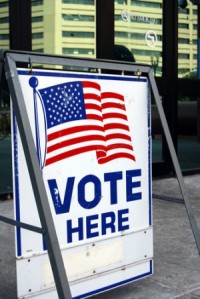Supreme Court rejects challenge to use of total population in drawing legislative district lines

Image from Shutterstock.
The U.S. Supreme Court returned to the equal-protection issue of “one man, one vote” on Monday with a unanimous decision that states may draw legislative district lines based on overall population.
The court ruled against two Texas voters who argued their votes are diluted because their districts have more eligible voters than other, more urban districts. They argued the Constitution requires legislative districts to be based on eligible voters, rather than overall population. Their constitutional argument, if accepted, could have shifted power to rural districts, which would generally favor Republican voters.
Justice Ruth Bader Ginsburg wrote the opinion (PDF) for the court in Evenwel v. Abbott. Two justices who did not join her majority opinion nonetheless concurred in the judgment.
Ginsburg said there is no “voter-equality mandate in the equal protection clause.” Basing voting districts on total population is supported by “history, precedent, and practice,” she wrote. A contrary decision would upset an approach that has been followed by all 50 states and countless local jurisdictions “for decades, even centuries,” she said.
Ginsburg said elected representatives “serve all residents, not just those eligible or registered to vote,” a principle comprehended by the framers of the Constitution and the 14th Amendment.
Ginsburg offered some examples. Nonvoters have a stake in a strong educational system and in receiving constituent services, such as navigating public-benefits bureaucracies. Ensuring that each elected representation serves the same number of constituents “promotes equitable and effective representation,” she said.
Ginsburg added that the decision did not resolve whether states may draw districts based on voter-eligible population. In a concurrence, Justice Samuel A. Alito Jr. disagreed with some rationales in the majority opinion that could be cited to support a future decision barring redistricting based on voter-eligible population. He agreed, however, that “practical considerations and precedent” support the court’s decision that reapportionment based on total population is constitutional.
Justice Clarence Thomas joined part of Alito’s concurrence and also wrote a separate concurrence. Thomas argued there is no basis for the one-person, one-vote principle in the Constitution, and states have “significant leeway” in apportioning districts.
Related articles:
ABAJournal.com: “Kennedy suggests a middle ground in SCOTUS arguments on meaning of one-person, one-vote”
ABAJournal.com: “Chemerinsky: 2 Texas cases before SCOTUS could have big implications for race in the US”
ABA Journal: “Redistricting case brings partisan politics, immigration and federalism before SCOTUS”
ABAJournal.com: “Should ineligible voters be counted in district remap? SCOTUS to consider ‘one man, one vote’ “
Write a letter to the editor, share a story tip or update, or report an error.


